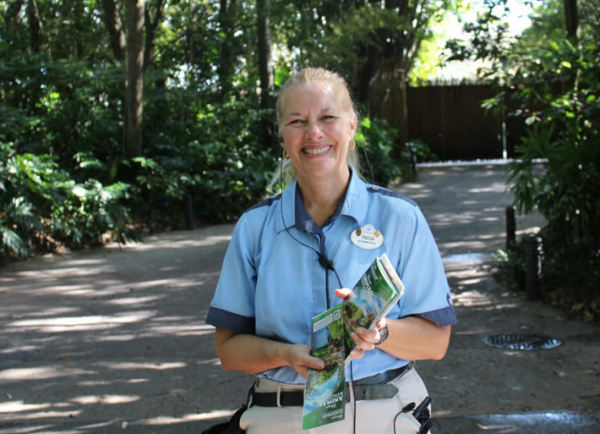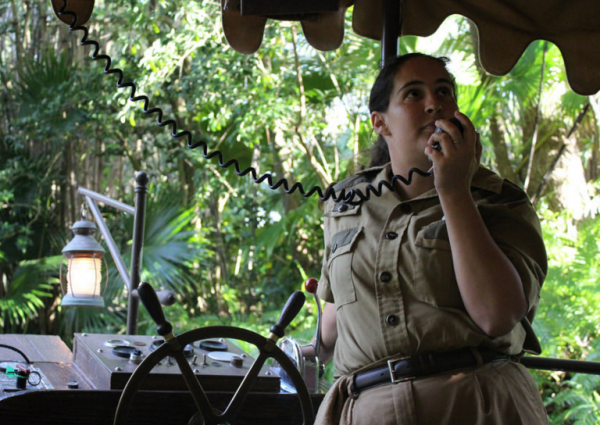4. Makeup, jewelry, and fingernail polish
Although women were required to wear pantyhose and heels in the early years, they were specifically forbidden from wearing makeup, most jewelry, or fingernail polish. The fresh-scrubbed look was required. These guidelines changed slowly, over time.
When Walt Disney World opened in 1971, women were allowed to wear post earrings no larger than a quarter inch. In 1987, this was increased to three quarters of an inch. Today, hoop and dangle-style earrings are allowed, provided that they extend no further than two inches below the earlobe (non-costumed women) or are no larger than a quarter (costumed women). Costumed women may not wear any other jewelry besides a wristwatch and one ring (or wedding set) per hand, but those not in costume are allowed to wear two necklaces and two bracelets.
In 1994, Disney shocked the industry when it radically overhauled its makeup and nail polish guidelines. For the first time, women were permitted to wear eye liner and eye shadow, as well as colored nail polish, albeit it in conservative, neutral shades. Red nail polish remained banned for a long time. Today, makeup must still be well-blended and appear natural, but the only disallowed nail polish colors are black, gold, silver, neon, and multicolor.
5. Costume materials
When Epcot opened in 1982, it predicted a very bright and heavily polyester future. In fact, a running cast member joke claimed that the then-acronym EPCOT stood for Experimental Polyester Costumes of Today. Scratchy and uncomfortable, the polyester fibers did not breathe well, making the costumes unbearably hot in the summer and cold in the winter. Fortunately, as the future became the present and polyester failed to take the world by storm, Disney gradually changed its designs.
Natural fibers were the replacement of choice in the early 1990s, though later evolutions used blends to improve durability while retaining comfort. Today’s costumes, while not always the most comfortable or practical, are vastly better than the polyester nightmares of early Epcot.
6. Unisex jobs and costumes
Throughout much of the Disney parks’ history, women and men had certain, separate roles. For example, it was not until the mid-1990s that women were hired on as Jungle Cruise skippers and men began piloting Disneyland’s Storybook Land Canal Boats ride. Over a period of a few years, the parks became fully gender-neutral (except, of course, for face characters).
As the various jobs became co-ed, so did many of the costumes. Today, separate male and female costumes are distributed for positions where it is required for historical accuracy, such as the Main Street Emporium and the Haunted Mansion, but the vast majority of costumes are identical for men and women.
Costumes were streamlined even further in 2005, when the company launched a “One Disney” initiative that unified costume styles for bigger volume discounts. Costumes at the same attractions across different parks were standardized. Some new costumes were created out of existing pieces from other locations. According to the Orlando Sentinel, the variety of apron styles was cut in half, while the number of different styles of black pants was trimmed from 20 to just four.
The Disney Look is meant to reflect a contemporary yet conservative image that imparts trust and family values. As societal norms change, the Disney Look must evolve to reflect those changes, while avoiding fads and trends. How has the company done over the years? What about today? Tattoos and piercings (other than female ears) are still forbidden, despite strong arguments that they have become fully accepted by mainstream society. Should these rules be relaxed? Where would you draw the line? Share your thoughts with us in the comments!



Add new comment